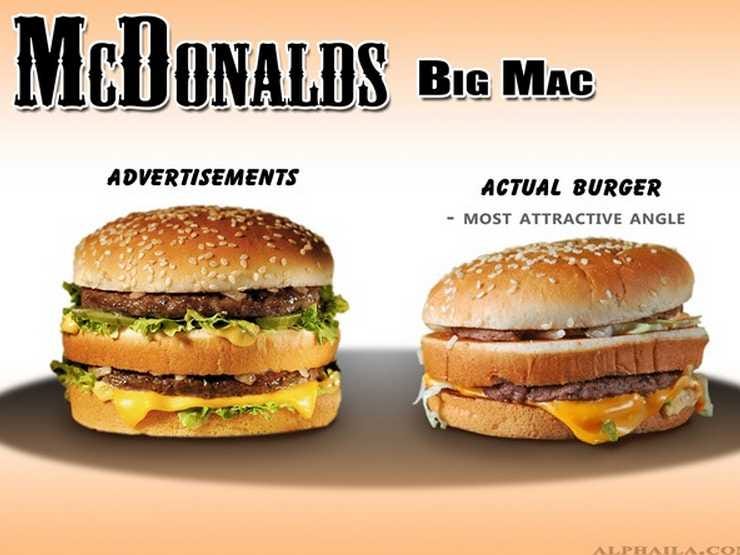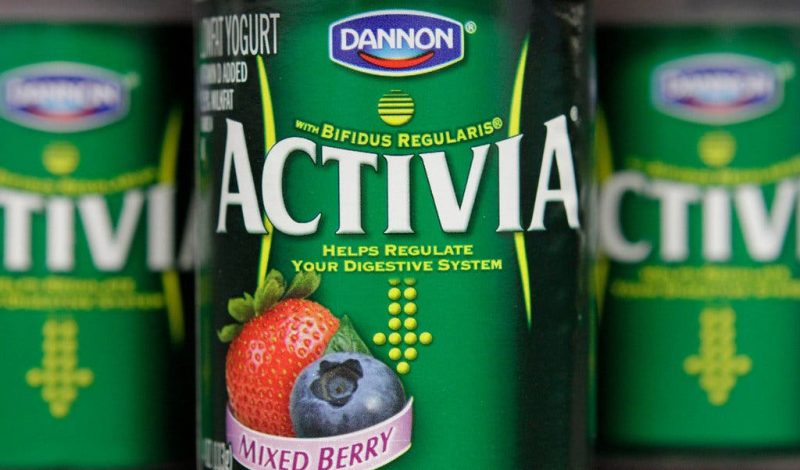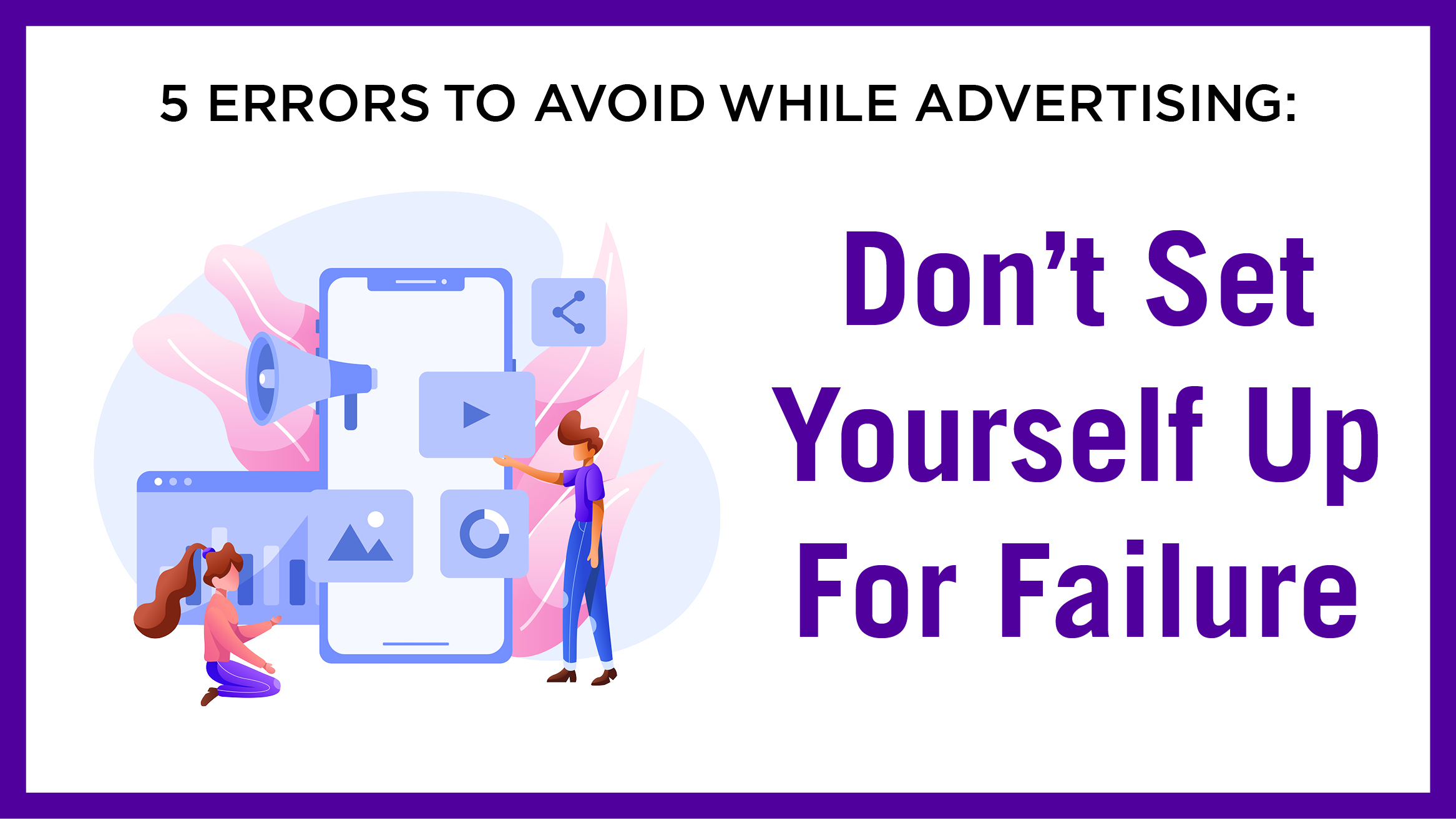5 Errors: Don’t Set Yourself Up For Failure
Welcome to the fourth post in our blog series, “Five Errors to Avoid While Advertising”. This series will guide you on what you can look out for while putting your marketing together for your business. Some mistakes are unavoidable and must be learned on an individual basis. On the other hand, there are some that many companies tend to make with their marketing that could be avoided. For our fourth error, we will discuss how companies can set themselves up for failure with their advertisements. This plays out in several ways, but we mainly see this with misleading graphics, images, or text. Successful advertising with no preparation for the success received may also cause failure, as we will discuss as well.
The controversy around editing images for marketing purposes can be tricky because, of course, you want to paint your products in the best light and get people to purchase them. The question is, how far should you take it?
Companies get around this by saying on their packaging that the “product is enlarged to show detail” or writing that details are exaggerated. Check some of your snack boxes or chip bags sitting in your kitchen cupboard. Chances are, at least one of them will say this line in some form in the fine print.
For guidance on proper marketing techniques for your products, contact our marketing team.
Example #1: McDonald’s

This isn’t the first time we’ve used McDonald’s as an example of an advertising failure. It’s not even that the advertising is poor in this case. It’s just misleading.
Customers can be put off by heavy exaggeration in advertising. An example of this is shown in what McDonald’s displays in its campaigns for its most well-known menu item, the Big Mac. As seen above, what is advertised is not what the burger truly looks like. As consumers, we expect this to an extent. However, how ethical is it to advertise what looks like a gourmet burger only for the customer to receive something that looks anything but?
Photoshop can truly be both a blessing and a curse for a business. Positively exaggerating the appearance of your products may bring you more customers to start. However, if customers are essentially not given what they are promised, they aren’t going to stay with you for long. Customer retention, gaining their trust, and then keeping their trust is just as important, if not more important, than gathering new customers.
The key in a situation like this is to find a healthy balance. Use your own products for your photography, but hire a professional photographer who can capture your products with appropriate lighting. Add minor touch-ups in Photoshop or another editing program, but don’t completely change the product’s appearance.
Advertise the best your business can offer and nothing more. Captivate your audience and then keep them entranced when they see the real thing. Doing otherwise will lead to failure for the product, or worse, the company.
Example #2: Activia

Going off of the same idea as our first example, you want to watch out for unsubstantiated claims in your advertising. People do not want to read clichés. They have heard and read every claim in the book. “Nine out of ten dentists recommend our toothpaste”. “Use our facial cream daily to completely cure your eczema”. “Lose 20 pounds in two weeks”.
Again, some bold statements are okay to make. After all, you want to capture your audience’s attention. However, you do not want to make outlandish claims that no one will believe or cannot be scientifically proven. Be very careful with the wording you use for your campaign, or it will lead to failure.
A notable example is the infamous 2010 advertising campaign from Dannon, the company behind Activia yogurt. The campaign, promoted by actress Jamie Lee Curtis in television commercials and print advertisements, stated that consuming Activia yogurt could relieve irregularities in the digestive system and boost the immune system in as little as two weeks.
The Federal Trade Commission (FTC) “enforces federal consumer protection laws that prevent fraud, deception, and unfair business practices,” according to its website. One of its tasks is to protect consumers from unchartered claims made by advertisements, including ones like Activia’s. It continues to regularly do so today, with one of its most common being to shut down claims of curing COVID-19.
With your advertisements, fact-check what you are saying through real expert testimonies and studies. If you are going to make a claim related to personal health, have true scientific evidence to back it up, and do not make a claim you cannot support. Unsubstantiated claims will only get you in trouble and make your customer base lose trust and credibility in your business.
Example #3: Advertising on TikTok

This time, we are not using a specific company for our example. Instead, we will talk in a more general sense about a newer form of advertising. One of the newest, most innovative, and most effective ways of advertising is through TikTok.
Many small businesses have found success through TikTok’s algorithm. Simple hashtags, video clips showcasing the process of creating the product, and friendly voiceovers can allow someone’s video to reach hundreds of thousands of people’s For You pages without the creator even trying.
All of a sudden, hundreds of orders for your products start pouring in. This is a good thing, right? Well, yes – if you are prepared for it. Going from sending out five orders in a day to five hundred all at once can be incredibly overwhelming.
Advertising, including on TikTok, can absolutely work in your business’s favor. Demand can go up very quickly, and if you are not expecting it, you may find yourself with hundreds of orders or inquiries and no way to quickly fulfill them.
What do you do? Well, don’t panic.
People can turn away from a business if it becomes well-known for having bad customer service. Be sure not to lie to your customers about when you are shipping products out or getting back to them on a service. Keep them in the loop – thank them for supporting you but inform them that due to a sudden influx of orders, shipping may take a bit longer. As long as you are transparent in your approach and with your customers, you will remain on their good side even if you fall a bit behind or need to relearn how you go about your business.
Success is a good thing – keep it that way! Continue advertising. Market to new customers while retaining your current customer base. Keep creating new products and growing your company. On the other hand, stick to your roots and know what you really do best, but also, don’t be afraid to take some risks. Figure out what works for your business and what doesn’t.
While you absolutely want your advertising to be successful, you want to be sure you can handle what it will do for your business. A great advertisement can spread and bring in customers, but horrible customer service will lose them even faster and lead to failure.
Conclusion
There are many ways to create your advertising campaign, but in the end, do not set yourself up for failure. Our overall message is to maintain honesty. Be honest about the appearance of your products. Be honest about what your product can do for people. And finally, be honest with your customers about your working process and when and how they will receive their products.
Growing and maintaining a customer base isn’t always easy. However, with the right tools and communication between you and your target audience, more and more people will want to invest in your business and watch you grow. A great marketing campaign will do just that!
Want to learn about one more error companies make while advertising? Check back in with us soon for our FINAL post in our “5 Errors to Avoid While Advertising” series. We will discuss how companies can fail to properly keep up with their existing customer base. Our focus will be on companies who perform this well and what you can do to emulate this part of their business models.

